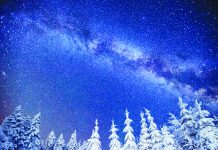This month, I decided to look at unicorns because they just feel spring-y. My research taught me two things: unicorns are one of the oldest depicted mythological creatures, and Europeans liked to write descriptions of rhinoceroses, but no one ever bothered to draw pictures to go with them. Which makes the journey of how we got from rhinoceros to glittering white, horned horses a bit of a disjointed mess. I’ll do my best.
Let’s get some unicorn basics out of the way: as we understand them today, unicorns are white horse-like creatures with a long, pointed horn protruding from their foreheads, sometimes with cloven hooves or a lion-like tail. Unicorns are untameable, strong, proud and haughty, and would rather die than be captured. They can only be calmed and captured by a virgin. Their horns are made out of a substance called alicorn which is believed to have magical medicinal properties, such as being able to nullify poisons and cure diseases. Some “official” measurements state a unicorn’s horn is between 1 cubit and 1.5 cubits (roughly 50 to 70 cm). You know unicorns are old when we’re measuring things in cubits!
We also need to talk about the monoceros, which was a creature that was conceptually related to the unicorn but was not a unicorn. At the same time, the term monoceros was used interchangeably with the term unicorn. (Which doesn’t complicate things at all.) And like the unicorn, a lot of descriptions of them seem to bear a closer resemblance to rhinoceroses.
Let’s talk about some of those descriptions, shall we? The oldest recorded writing describing a unicorn was in Indica, written by Greek physician and historian Ctesias the Cnidian. He described them like “wild asses” (probably specifically the onager, an Asiatic animal closely resembling a donkey) with a horn that is red, white, and black. In his book, Natural History, Pliny the Elder described a monoceros having the head of a stag, body like a horse’s, the feet of an elephant, and the tail of a boar. He also said it made a deep bellowing noise and has a black horn. There is record that Marco Polo claimed to have seen a unicorn, saying they are smaller than elephants with heads like a wild boar, feet like an elephant’s, rough hair like a buffalo, and a big black horn. He described them wallowing in mud and called them ugly. (Rude.) He also expressed disappointment that they were nothing like the way Europeans imagined them.
Every instance just seems to me as someone trying to describe a rhinoceros, but after the world’s oldest game of telephone, we somehow ended up with our modern rendition of the unicorn.
But let’s not forget about the virgins! What’s up with that? Well, in the Middle Ages and the Renaissance, a book called Physiologus had an elaborate allegory about a unicorn, which represented the Incarnation of Christ, laying its head on the lap of a maiden, which represented the Virgin Mary. It seems from here that the idea that a unicorn can only be captured by a virgin originates from. From there, there have been many pieces of both religious and secular art showing the hunt of the unicorn. It is sometimes depicted wearing a collar with a broken chain. The unicorn is very popular in heraldry as well.
Now you have a brief overview of unicorns. There’s a lot I didn’t get to cover, so stay tuned for next month’s article where I’ll talk specifically about the unicorn’s horn.










